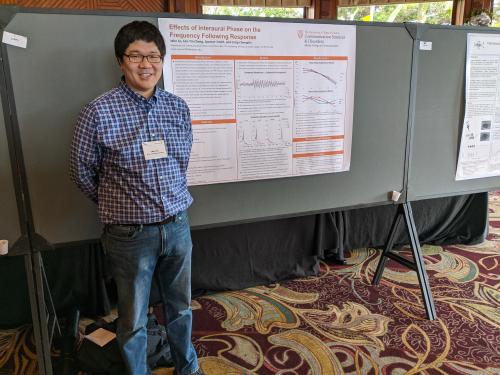The Texas Auditory Neuroscience (TexAN) Lab is housed in the Department of Speech, Language, and Hearing Sciences in the Moody College of Communication at the University of Texas at Austin. Research in the TexAN Lab examines brain processes involved in listening in noisy environments and how these processes change across the lifespan or as a consequence of hearing loss. To study this topic, we use a combination of behavioral and objective tests of auditory function. For more information on current research and our collaborators, please visit our Research page.
Summer 2023 Graduation
Can (Elaine) Xu earned her Ph.D. from the University of Texas at Austin and pursued her teaching and research interests as an assistant professor at California State University-Sacramento.
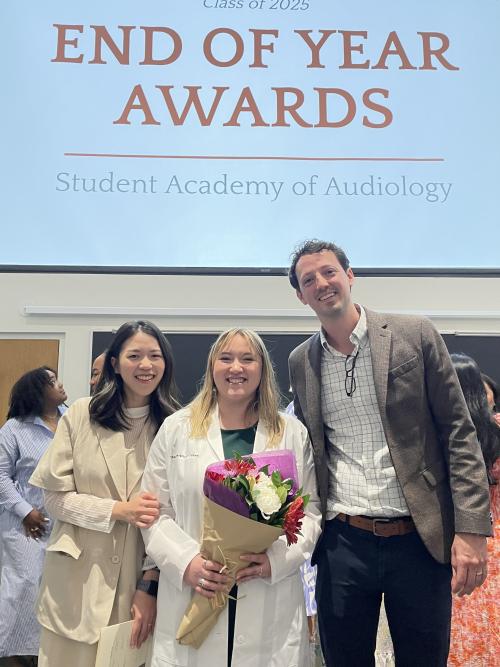
End of Year Award 2024
We are excited to announce that our Doctoral of Audiology student, Sarah Medina, will begin her externship next year. We are incredibly proud of Sarah’s accomplishments and look forward to supporting her continued success. Congratulations, Sarah!
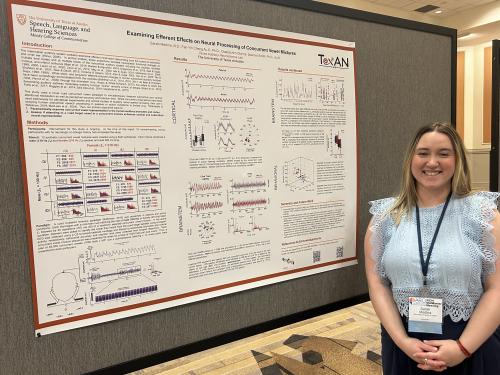
ARO 2024 Poster
Members of the TexAN Lab traveled to the 47th Association for Research in Otolaryngology Midwinter meeting in Anaheim, CA to present a research project. The project explored how attention modulates concurrent vowel identification at both subcortical and cortical levels.
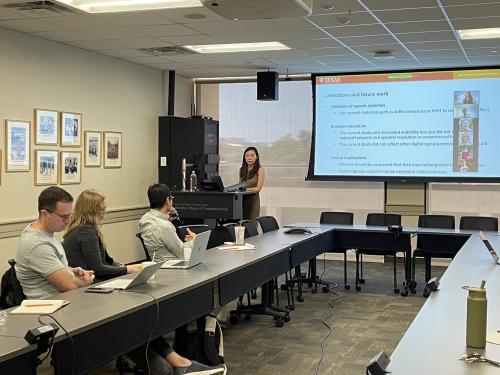
Summer 2023 Defense
Can (Elaine) Xu has successfully defended her dissertation on "Simulated Bimodal Speech Perception in Noise for Native and Non-Native Speech". Congratulations to Dr. Xu on this achievement!
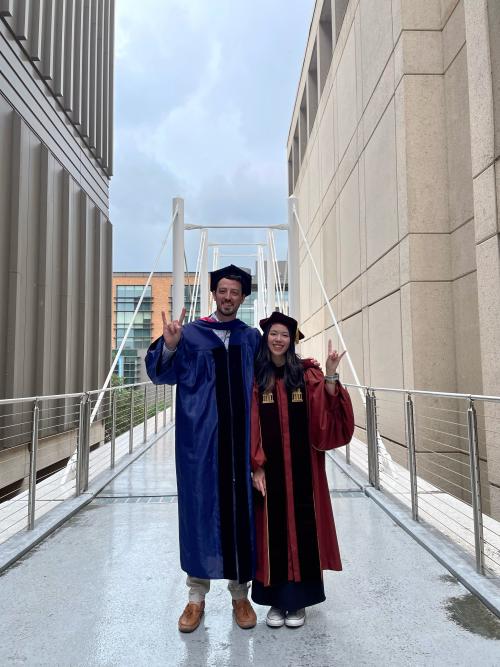
Fall 2022 Graduation
Fan-Yin Cheng graduated with her Ph.D. from the University of Texas at Austin and will continue developing her research interest as a postdoctoral research fellow in the TexAN Lab.
ARO 2022 Podium
Members of the TexAN Lab virtually attended the 45th Association for Research in Otolaryngology Midwinter meeting to present their research on how perceptual shifts from non-speech to speech enhance subcortical auditory processing.
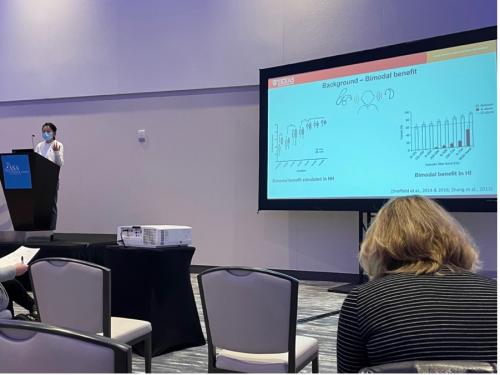
ASA 2021 Podium
Members of the TexAN Lab recently traveled to the 181st Acoustical Society of America conference in Seattle to present two research projects on neural indices of spatial listening and bimodal hearing, respectively. These presentations explored how attention modulates how spatial information is coded in the brain and how simulated bimodal (cochlear implant in one ear, hearing aid in the other) signals are neurally represented.
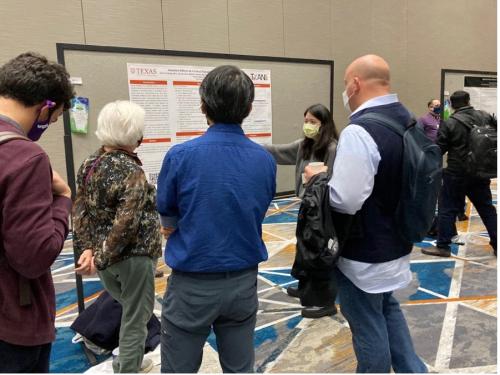
ASA 2021 Poster Presentation
Members of the TexAN Lab recently traveled to the 181st Acoustical Society of America conference in Seattle to present two research projects on neural indices of spatial listening and bimodal hearing, respectively. These presentations explored how attention modulates how spatial information is coded in the brain and how simulated bimodal (cochlear implant in one ear, hearing aid in the other) signals are neurally represented.
